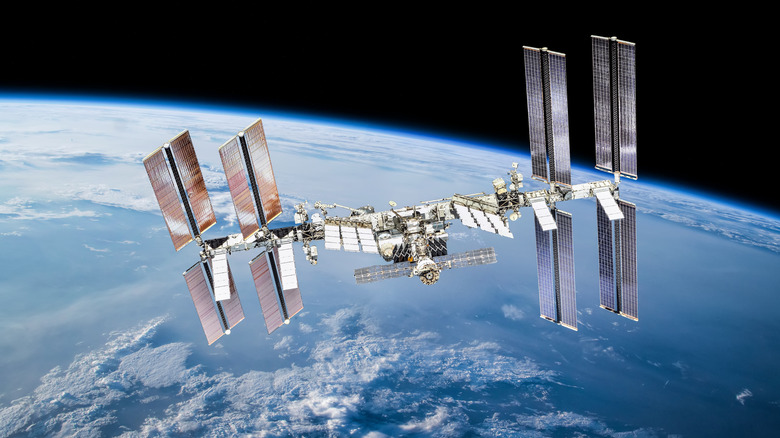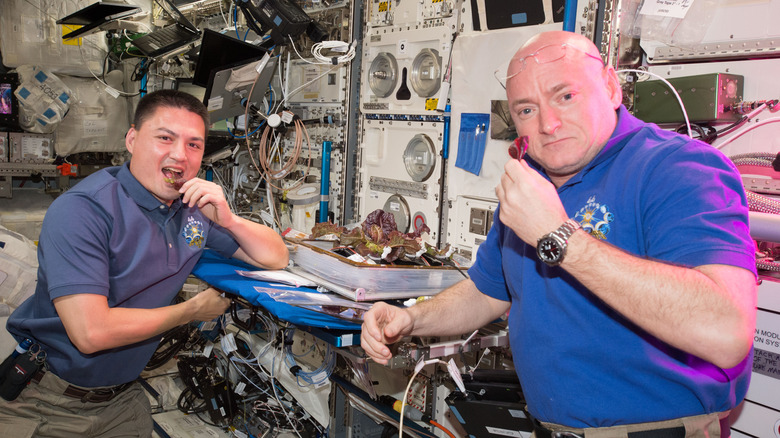Does Food Go Bad In Space?
The logistics of getting food into space and in the stomachs of astronauts has been a constantly evolving process of improving nutrition while also paying attention to taste. As the Space Foundation Discovery Center states, the first human astronaut, Yuri Gagarin, had pureed meat and chocolate sauce for food during his 1961 space flight — ideal for squeezing quickly and cleanly out of tubes with minimal mess. In the weightless environment of space, crumbs can float away and potentially enter and damage sensitive equipment on board the spacecraft.
Cuisine in space has become far more diversified since then, with actual meals that can be prepared on the International Space Station without fear of crumbs. It comes in various dehydrated forms as well as more recently in MRE-style packaging that only needs to be heated (via HowStuffWorks). While it is easy to assume that such food would be long-lived, as it does not require refrigeration, it does need to be carefully stored, and even then food in space does expire (via NASA).
Traveling to other planets depends on a revolution in space food
Since space missions can last many months, it becomes prudent to ask exactly how long food lasts in the ISS before resupply becomes necessary. As it turns out, not too long. According to Wired, the various foods have a shelf life of about a year. By then it will have heavily degraded and lost much of both its flavor and nutritional value, with different vitamins degrading at varying rates.
This presents major issues if there are to be any manned space flights to other places in the solar system like Mars, as the journey itself will take many months to complete. The improvement of food duration and storage is therefore a critical step in the future of space exploration. Possible solutions that could stave off decay might be growing the food from scratch (pictured above on the ISS), food capsules that would ideally decrease the weight and space taken up, and 3D-printed food that could eliminate the need for food storage altogether (via Inverse).

